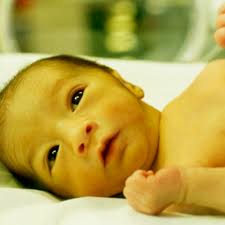Babies at highest risk for developing newborn jaundice are:
premature babies, or babies born before 37 weeks’ gestation
babies who aren’t getting enough breast milk (or formula, for babies that are not being given breast milk), either because they are having a hard time feeding or because their mother’s milk isn’t in yet
babies whose blood type isn’t compatible with the blood type of their mother
A baby whose blood type isn’t compatible with that of their mother can develop a buildup of antibodies that can destroy their red blood cells and cause a sudden rise in bilirubin levels.
Other causes of newborn jaundice include:
bruising at birth or other internal bleeding
liver problems
an infection
an enzyme deficiency
an abnormality in your baby’s red blood cells



 Contact Us
Contact Us







 Hospitals
Hospitals
 Doctors
Doctors
 Diagnostic
Diagnostic
 Pharmacy
Pharmacy
 Health Tips
Health Tips
 Blog
Blog

























Comments